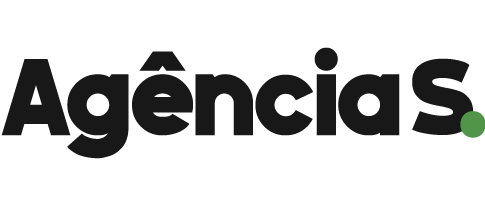OKRs: Learn the complete OKR Management System
- Descrição
- Currículo
- FAQ
- Revisões
In this course, you will learn the fundamentals of OKRs, from Objectives and Key Results to the three mechanisms that make them work: The Planning Habit, The Execution Cadence and The Quarterly Cycle.
In Section 1, we’ll look at some of the problems that you may recognise that may be driving you to want to use OKRs. It’s essential to understand what you’re trying to change before you start, so you can ensure you actually address those issues.
In Section 2, we’ll talk about what good looks like – what you’re really trying to achieve as a leader, so you rather than just solving the problems, you know where you want to get to.
In Section 3, we’ll summaries the five components of the OKR management system – so you know how they all fit together and why they are there.
In Section 4, we’ll cover Objectives, and how to write a good one that links to your strategy.
In Section 5, we’ll go into Key Results in detail, including some alternative formats, examples, how to set them and select the right metrics, and how to review your Objectives and Key Results together.
In Section 6, we’ll introduce The Planning Habit, including the One Page Plan and template, as well as how to review and align with your team and stakeholders to get their buy-in.
In Section 7, we’ll introduce The Execution Cadence, so you know how best to run OKRs in your week by week work cycle to create momentum and deliver results.
In Section 8, we’ll describe the Quarterly OKR Cycle, and how consecutive cycles can fit together to deliver results over time and actually execute your strategy.
Throughout the course, we’ll be using a few simple exercises to help you set OKRs, start planning and executing, and get ready for the next OKR cycle.
-
1Underpants Gnomes and the Missing Phase 2Vídeo Aula
Find your pain points - there's no point changing without a good reason.
The Underpants Gnomes from South Park illustration
Micromanagement, Vague Leadership and the missing Phase 2
Consequences - conflict, low engagement, and losing the best employees
Vague direction isn't empowering
-
2Other Common Problems - Pointy Haired BossesVídeo Aula
Other common problems you might find familiar
Unclear Strategy
Bad Planning
Boring Team Meetings
Shiny Object Syndrome
Lack of Urgency or Ambition
Think through your own situation to clarify why you are on this course
-
3Exercise - Identify your Pain PointsVídeo Aula
Exercise 1 - Why OKRs
Clarify and write down why you want to learn OKRs - what pain points are you addressing, what benefits are you seeking?
-
4Extra - How to get great feedbackVídeo Aula
Asking for feedback from team, stakeholders and managers is key
People don't know how to give feedback so have a go-to question
What to do with feedback to create a positive cycle of better feedback.
-
5What Good Looks Like - and how it works at GoogleVídeo Aula
I wasn't impressed with OKRs when I first encountered them at Google.
But then I discovered that my colleagues were consistent, aligned and focused on the same things.
This was because of how OKRs were used.
Doug and the Ads Toolbar - how OKRs empowered him to to invent and solve problems.
-
6How Good relates to OKRsVídeo Aula
OKRs help empower people by giving context and constraints.
But OKRs don't do this on their own, you need good management as well.
The process of setting OKRs is important for increasing context.
OKRs help us understand the context, and hence could more easily manage our own tasks.
Reviewing another team's OKRs help us understand how to collaborate.
Good Manager Behaviours (according to Google - see link in Resources folder) - most of these are closely related to using OKRs.
-
7Exercise - Describe what Good looks like for youVídeo Aula
Define what you want to achieve from using OKRs in your management system.
-
8The Five Components of the OKR Management SystemVídeo Aula
Introduction to the five main components of the OKR Management System:
Objectives
Key Results
The Planning Habit
The Execution Cadence
The OKR Cycle
-
9An OKR ExampleVídeo Aula
An example OKR from my team at Google, discussed in detail.
-
10ExerciseVídeo Aula
Improving your OKR and starting the plan.
-
11Extra: Where to use OKRs, and where not toVídeo Aula
Don't use OKRs for everything. eg:
Sales incentive plans will always take precedence over OKRs for sales teams!
For Business as Usual, use metrics rather than OKRs
Use OKRs for driving change in key areas.
-
12What are Objectives and How do I use them?Vídeo Aula
Objectives are to set direction and inspire action.
It should answer the question "What are we really trying to do here?"
Objective format - keep it real and active, use slang if it works for you.
Your Objectives taken together should clarify your strategy, as applied to this quarter.
Even better - answer the question "why now?"
Example Objectives (from different companies)
-
13ExerciseVídeo Aula
Set an Objective (or more)
-
14What are Key Results and How do I use them?Vídeo Aula
Key Result formats
Metric Improvements
Critical Customer Milestones
Quality Control
Operationalisation
Investigation
Don't over-emphasise the rules or formats - use what works for your team
-
15Key Result ExamplesVídeo Aula
Examples of Key Results and some discussion
-
16How to Set Key ResultsVídeo Aula
How to identify "Phase 2" - output and outcomes (depending on the maturity of your team).
Moving from Actions to Outcome
Moving from Profit to Outcome
Sometimes imperfect Key Results are OK - as a leader, you can fill the gaps
Tips for setting Key Results, and for selecting the right metrics
-
17OKR ReviewVídeo Aula
How to review your Objectives and Key Results:
Do they capture our strategy?
Do they help us make decisions?
Are they realistic?
-
18ExerciseVídeo Aula
-
19The Planning HabitVídeo Aula
A goal without a plan is just a dream - how to avoid Groundhog Day.
A plan is a basis for change, not a blueprint for execution.
Write the plan, then review with your team, management, collaborators and stakeholders.
Use this process while you're finalising the Key Results to make sure they are realistic.
Use the plan in the weekly meeting.
-
20Ownership - of Objectives, Key Results and of PlansVídeo Aula
What are we planning for, and who is planning for what?
Set owners or Directly Responsible Individuals for each Objective or Key Result
-
21The One Page PlanVídeo Aula
The One Page Plan template walkthrough and some examples
-
22Reviewing and Aligning your PlanVídeo Aula
How and why to get managers, teams, stakeholders and collaborators to review your plan.
The write-review-revise cycle is how to engage other people in your work, resolve some of the risks and align across teams.
-
23Extra - Common problems with ownershipVídeo Aula
What happens when it's not obvious who should own a key result or a plan.
Multiple owners, cross-functional teams, and organisational charts that don't always help.
-
24ExerciseVídeo Aula
Draft the plan and review it.
-
25The Execution CadenceVídeo Aula
You need to run the weekly execution cadence - beat the drum each week.
Use these three components for your weekly meeting:
Wins and Learnings
Data and Anecdotes
Progress, Problems and Plans - in detail!
Create Actions and Make Decisions (including decisions to have more meetings!)
Use OKRs as the North Star, not the Agenda
-
26Extra - The Friday WrapVídeo Aula
The weekly cadence can be improved dramatically with a Friday Wrap - capture wins and learnings, update progress asynchronously, and then celebrate with an all-hands.
-
27ExerciseVídeo Aula
Set up your weekly execution cadence
-
28The OKR CycleVídeo Aula
OKR cycles in detail, and how they link together.
How to run an all-hands and a mid-quarter review
Transparency creates accountability
-
29Linking Cycles TogetherVídeo Aula
How OKR Cycles link together - the mid-quarter review leads to setting OKRs, and the all-hands covers finishing one quarter and starting the next.
-
30ExerciseVídeo Aula
Set up your Quarterly OKR Cycle
-
31Extra - RetrospectiveVídeo Aula
Improve your OKR Management System by running a retrospective every quarter and changing how we manage.












